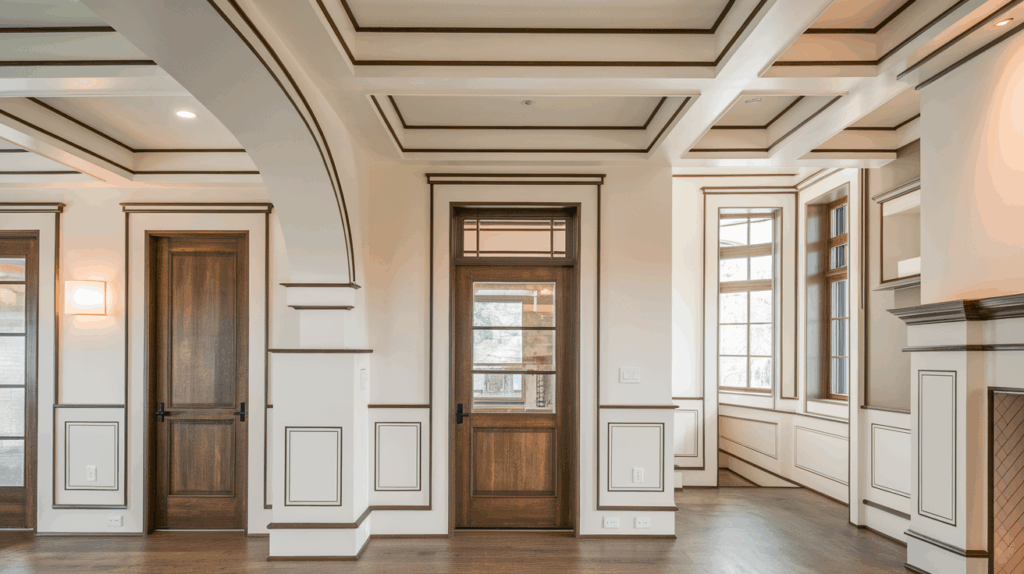The Craftsman style has been a favorite for over 100 years, and it’s easy to see why.
It focuses on simplicity, craftsmanship, and the beauty of natural materials, creating a warm and timeless feel for any home.
One of the standout features of this style is its trim, wide, bold casings, and clean lines that make a room feel inviting and full of character.
Craftsman trim not only looks great but also gives your home a solid, lasting feel.
In this post, I’ll walk you through the history of Craftsman trim and Craftsman-Style Window Trim, and share some creative ideas for adding it to your home.
If you’re updating an older space or adding some classic charm to a newer one, these ideas will help you create a home that’s both stylish and timeless.
What is Craftsman Style Trim?
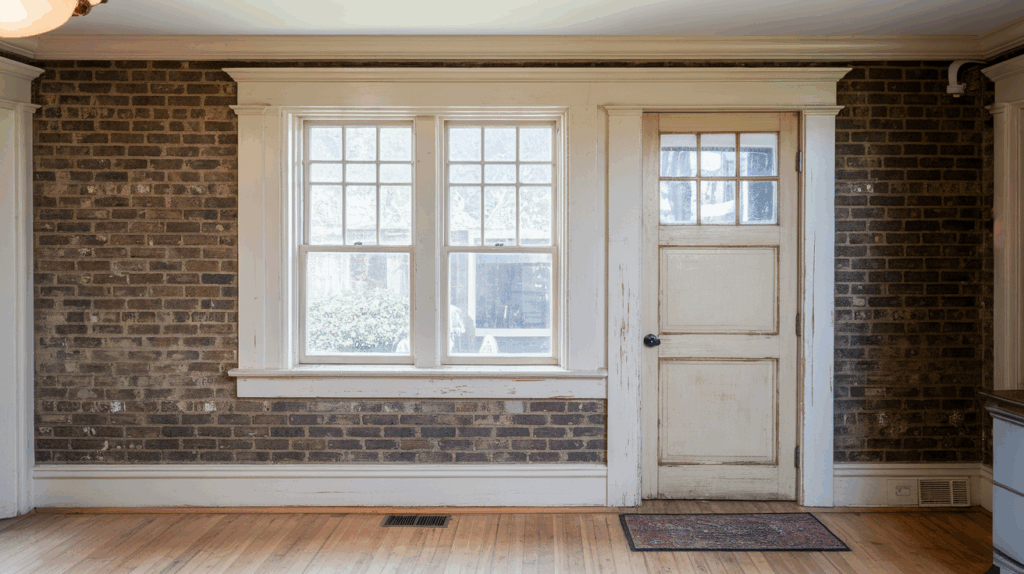
The Craftsman style started a long time ago, in the early 1900s, when people wanted to make homes feel warm and simple.
They didn’t want things to be too fancy or made by machines. Instead, they wanted things made by hand, using natural materials like wood and stone.
Craftsman trim, which is the wood around doors and windows, became a big part of this style.
It was designed to make homes feel cozy and natural, connecting the inside to the outdoors.
The wood used is often oak, and it’s left in its natural color to show off the beautiful lines and texture.
It’s all about keeping things simple, useful, and beautiful without too much decoration.
Creative Craftsman Style Trim Ideas
I’ve shared some creative ways to incorporate this classic design into your home, creating a warm and inviting look.
1. Bold and Boxy Casing Around Doors
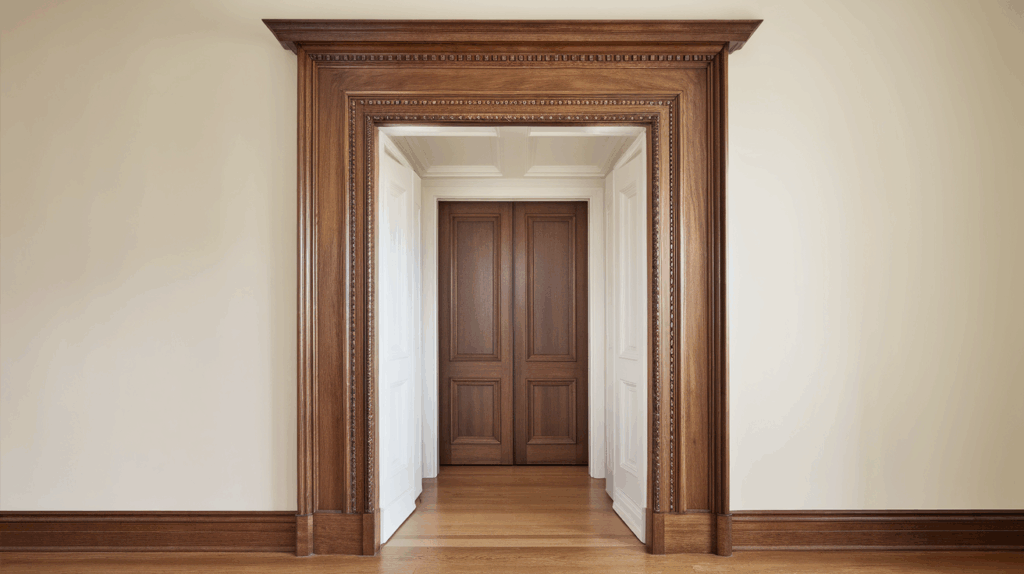
Thick, wide trim around doors with square edges creates a strong, bold look.
The clean, sharp lines of the trim enhance the overall design, making the doorway feel both elegant and solid. It’s a simple way to add visual interest and elevate the style of any room.
2. Simple Yet Elegant Window Casing
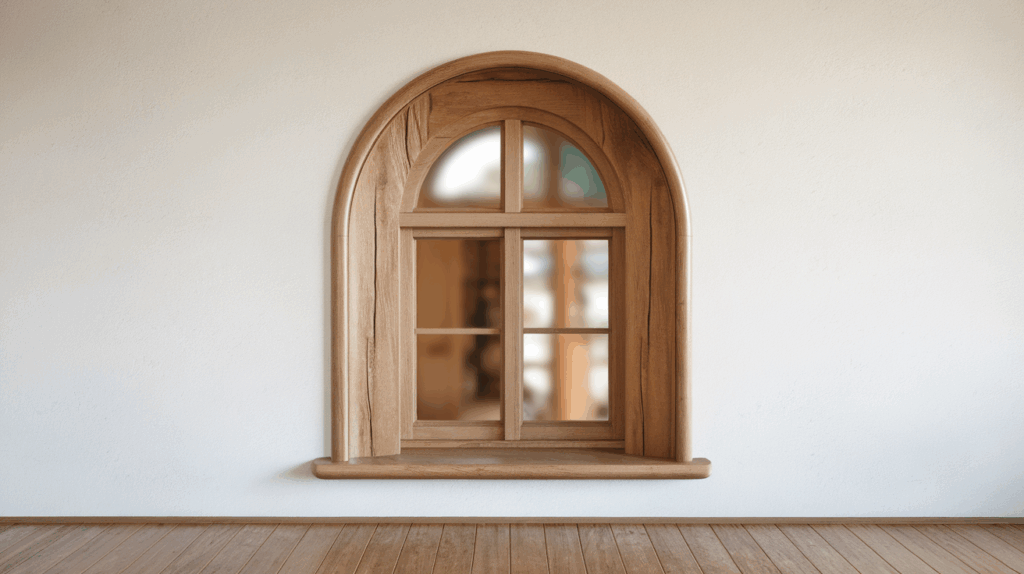
Simple, clean window trim can be elegant, too! Using a minimal design that highlights the natural beauty of the wood makes the window look special without being too fussy.
The trim adds just enough detail to frame the window beautifully, enhancing the natural light and the warmth of the wood.
3. Wainscoting for Wall
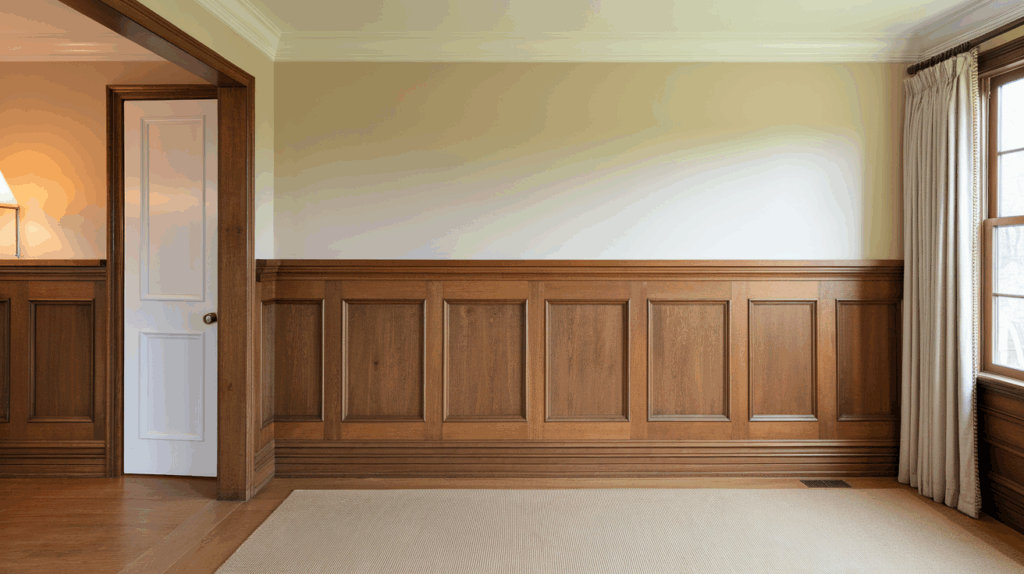
Wainscoting is a trim that covers the lower part of the walls. It adds a polished look to rooms while keeping the simple, functional style of Craftsman design.
The clean lines and natural wood finishes of wainscoting offer a timeless appeal, making it a great way to add character without overwhelming the room.
4. Baseboards with Decorative Details
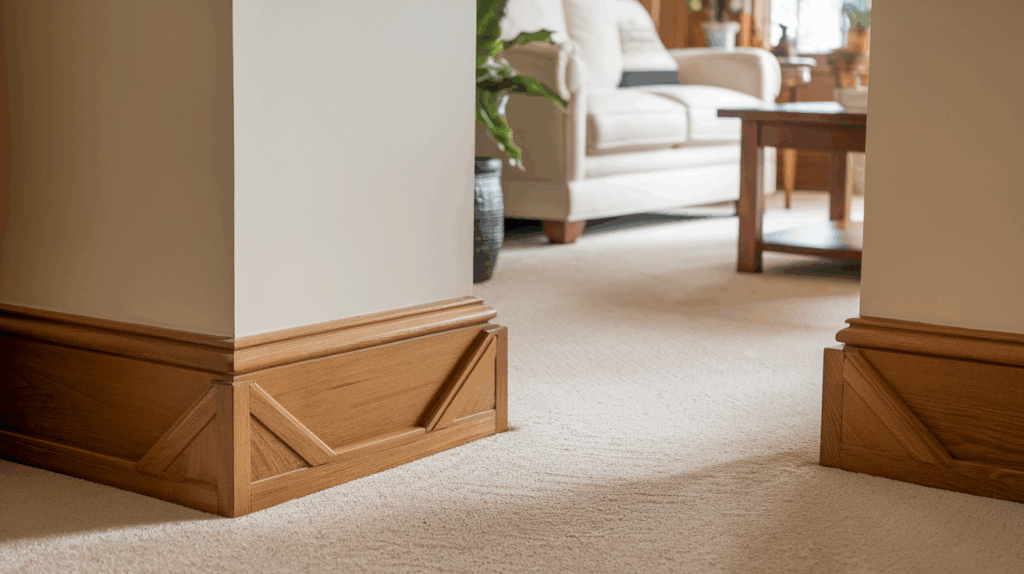
Baseboards don’t just need to be plain. Adding small details like exposed joints or angled cuts can make baseboards look unique and interesting.
It’s an easy way to elevate the look of your space without overcomplicating things, keeping it functional yet stylish.
5. Coffered Ceilings with Trim Accents
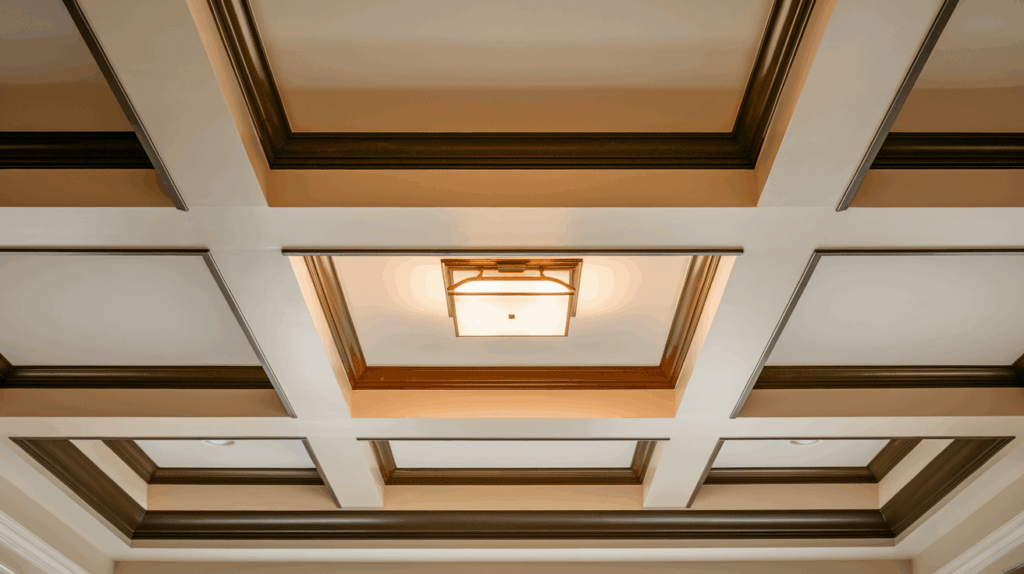
Trim can also be used on coffered ceilings to create depth. This adds more architectural style to a room and makes the ceiling stand out as a feature.
It’s a great way to turn an often-overlooked part of the room into a focal point that complements the overall design.
6. Craftsman-Style Archways
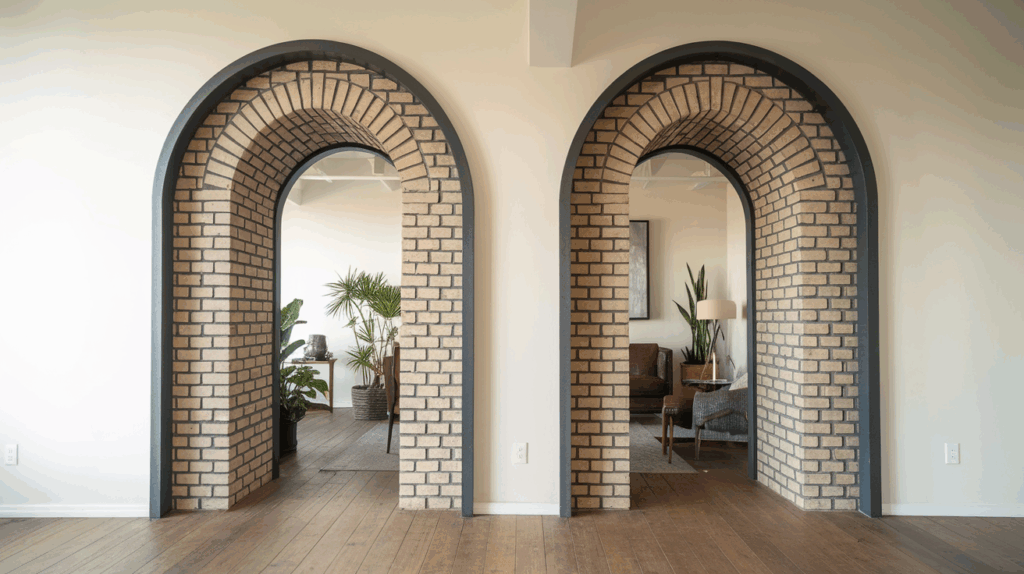
Adding archways with simple trim can frame important spaces like hallways. It adds a distinctive look that’s both functional and beautiful.
It’s a perfect way to define areas without adding unnecessary complexity.
7. Geometric Patterns in Trim
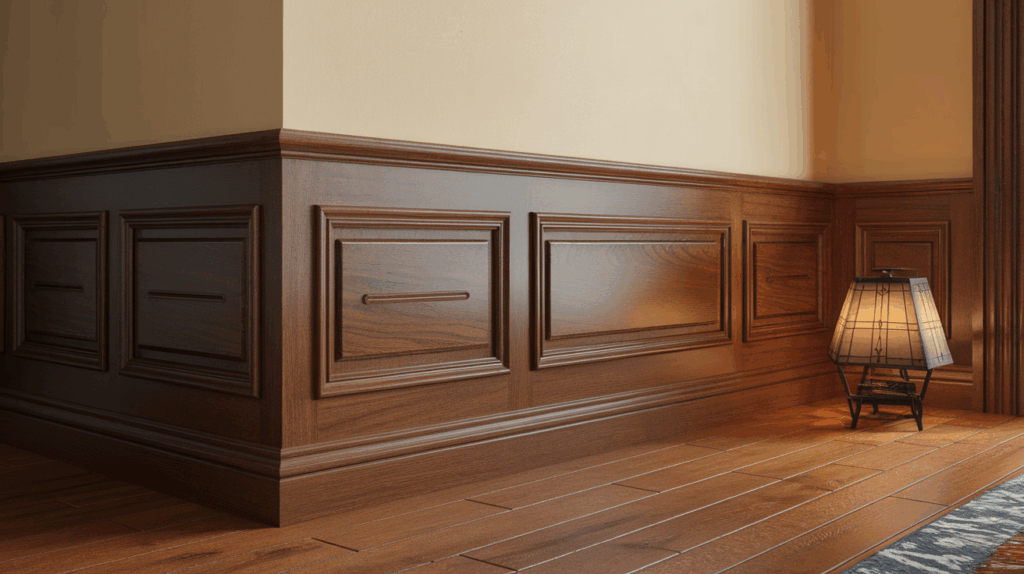
Geometric patterns in trim can be a great way to add a modern touch while still maintaining the timeless appeal of craftsman design.
Consider incorporating subtle shapes, such as squares or rectangles, into your trim work.
These simple patterns can create a clean, structured look that draws the eye without overwhelming the space.
8. Transom Window Frames
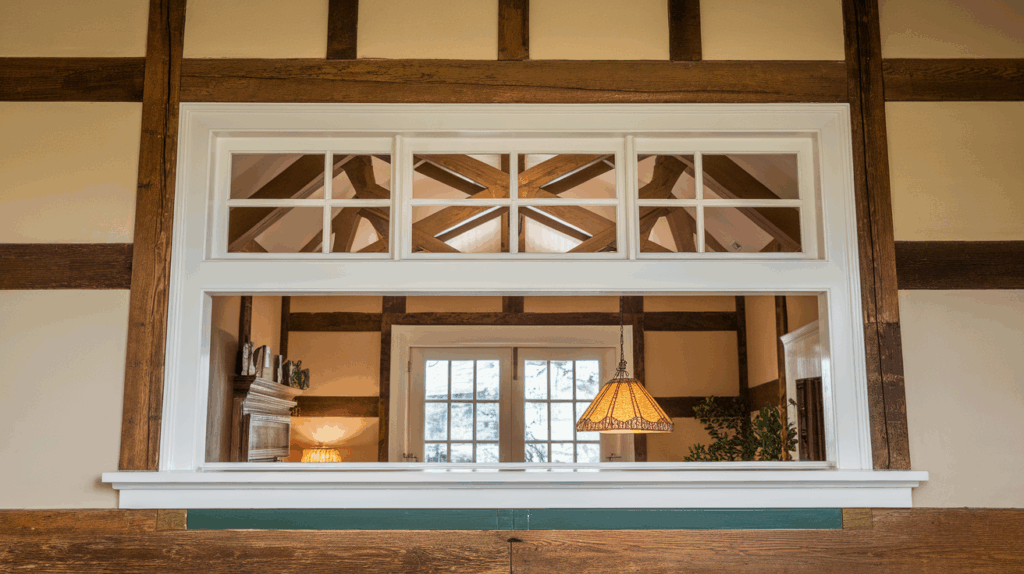
Transom windows are great for letting in light, and adding trim around them helps highlight the space between rooms, creating a nice transition.
This simple detail can help enhance the flow of space, making rooms feel more connected while maintaining their individual character.
9. Custom Mantels with Trim Accents
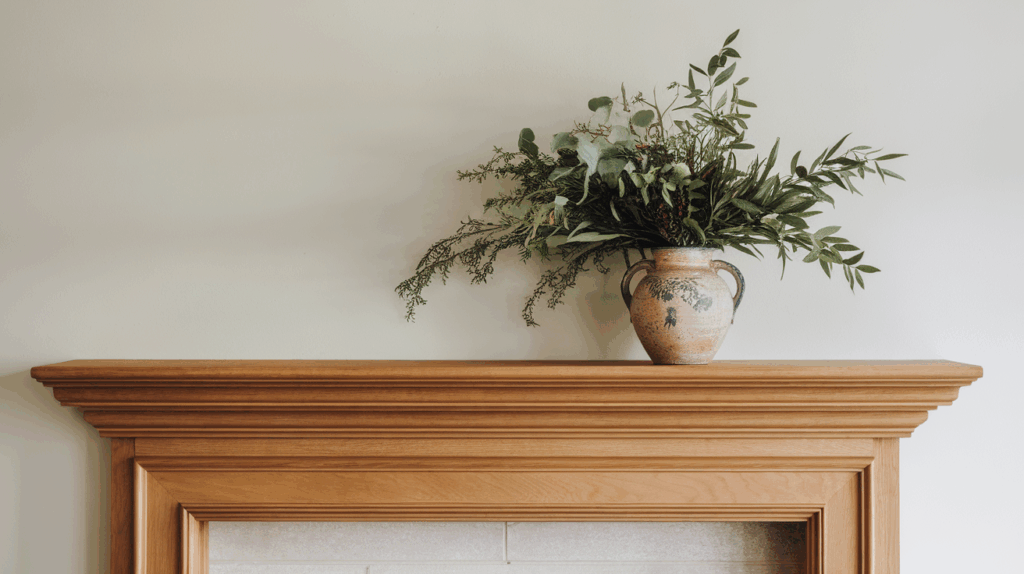
Adding trim to a fireplace mantel can turn it into a standout feature. Focus on horizontal lines and natural wood finishes to keep it simple but beautiful.
This simple yet beautiful design keeps the focus on the craftsmanship and natural texture of the wood, enhancing the mantel’s presence without overwhelming the space.
10. Staircase Trim Ideas
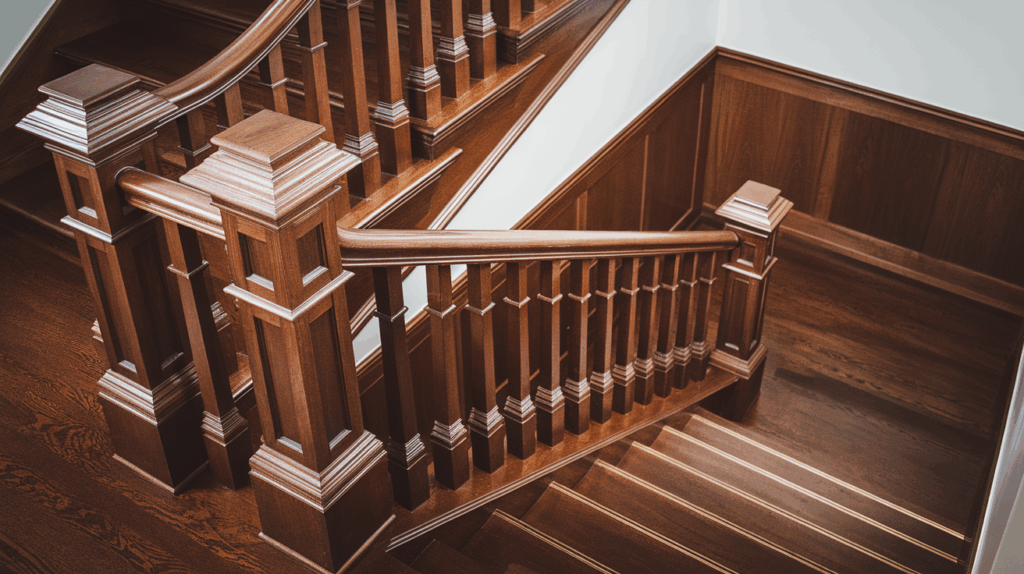
You can add Craftsman-style trim to staircases, including detailing on the balusters and handrails. This gives stairs a more polished and connected look.
This gives the staircase a more polished and cohesive appearance, enhancing the overall design of the space
11. Built-In Shelving with Trim Work
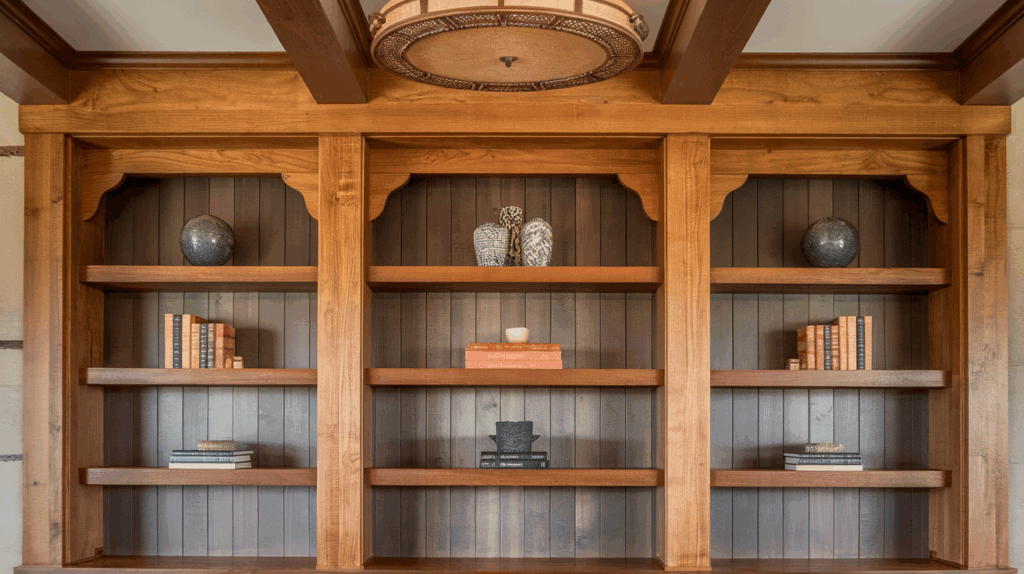
Custom trim around built-in shelves can frame them nicely, adding function and style to your storage while maintaining the Craftsman style.
Plus, it adds structure and depth to the shelves, making them feel like an intentional part of the room rather than just a functional element.
12. Craftsman Style Crown Molding
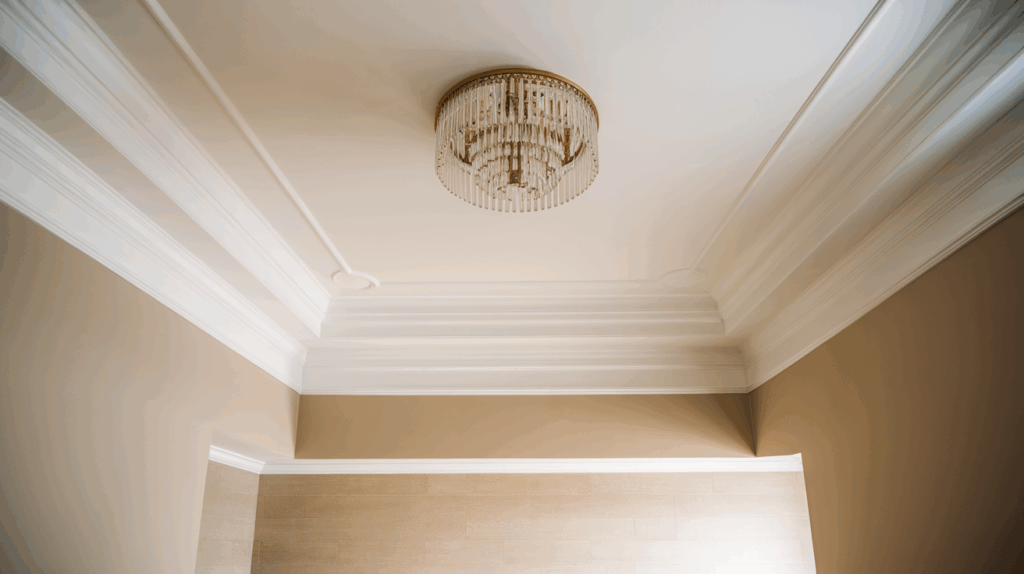
Simple, clean crown molding around the top of your walls can finish off a room. It adds just enough detail to enhance your ceiling without being too ornate.
It’s a simple touch that makes a big difference, giving your room a refined, completed feel without overwhelming the space.
13. Sliding Barn Door Trim
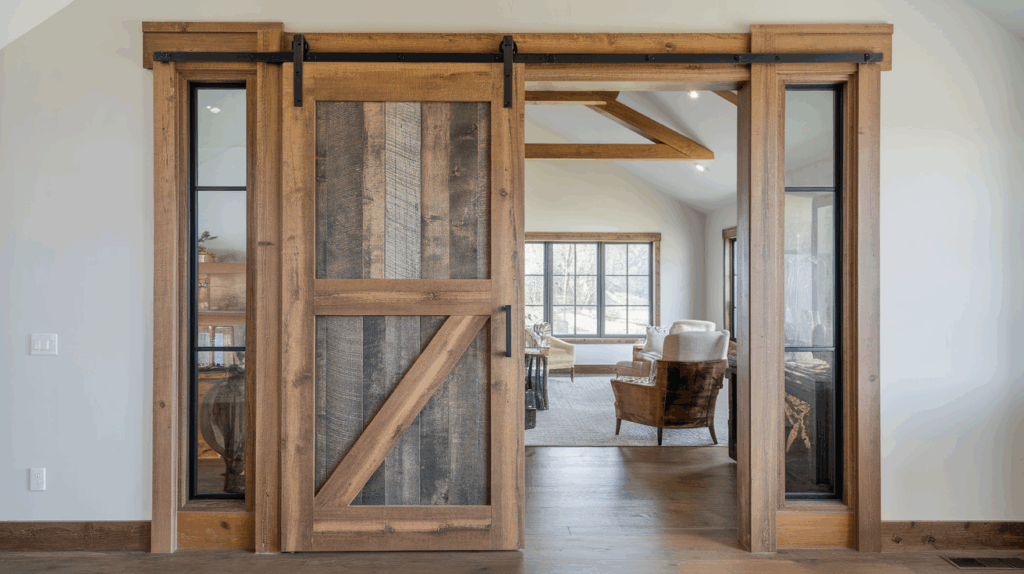
Framing sliding barn doors with Craftsman trim gives a modern yet rustic vibe. It’s a nice way to combine old and new styles while adding character.
It’s a perfect way to merge rustic warmth with the timeless appeal of Craftsman design, creating a space that feels both fresh and inviting.
14. Custom Trim for Closet Doors
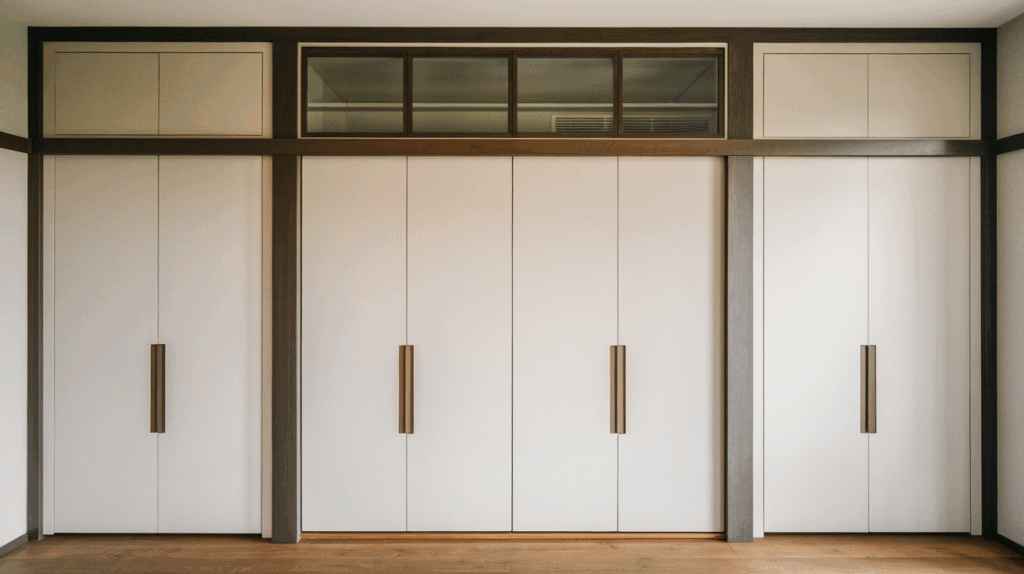
Adding simple, sleek trim to closet doors helps them blend with the overall style of your home, creating a clean and unified look.
The trim adds just enough structure and definition to the doors, making them feel like a cohesive part of the space without drawing too much attention.
15. Painted vs Natural Wood Trim
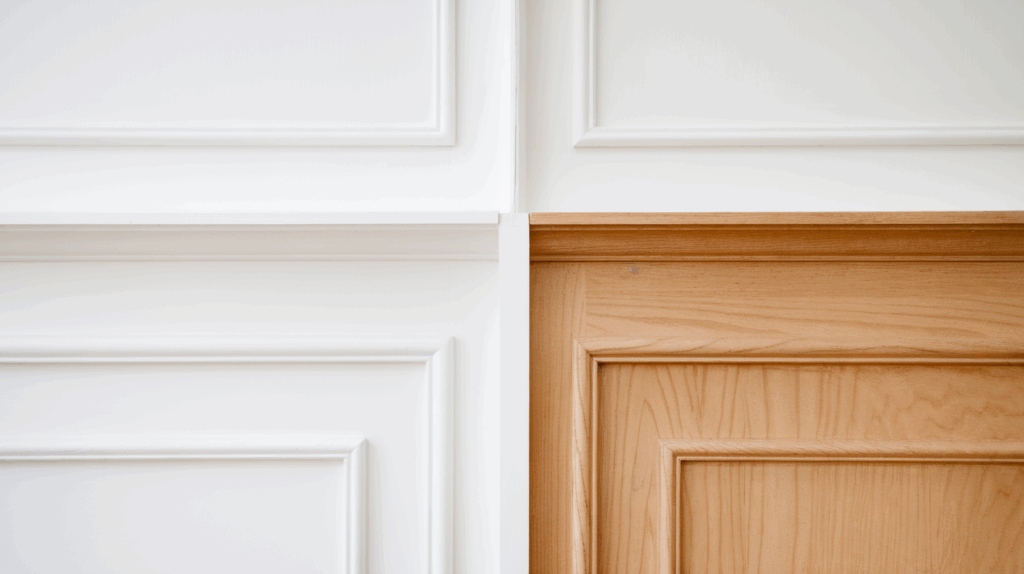
You can choose between painted or natural wood trim. Painted trim gives a fresh, clean look, while natural wood adds warmth and texture to a room.
Both options have their own charm, so it’s all about choosing the one that best suits your home’s style and atmosphere.
16. Stained Trim for a Richer Look
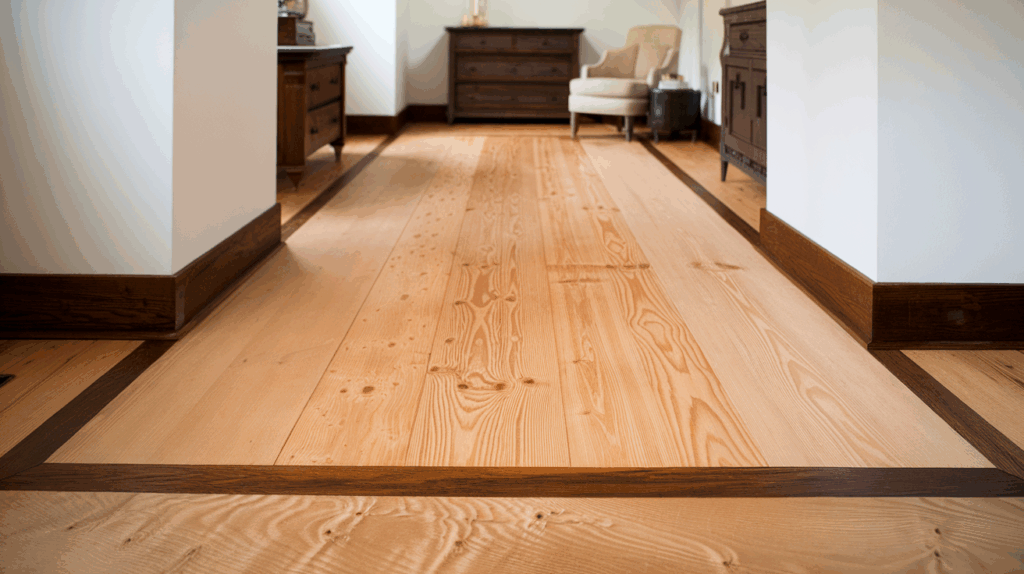
Stained trim, instead of painted, gives a room a deeper, richer feel. The natural wood tones show off the grain and add warmth to your space.
Stained trim, instead of painted, gives a room a deeper, richer feel. The natural wood tones show off the grain and add warmth to your space.
17. Mixed Materials for Added Texture
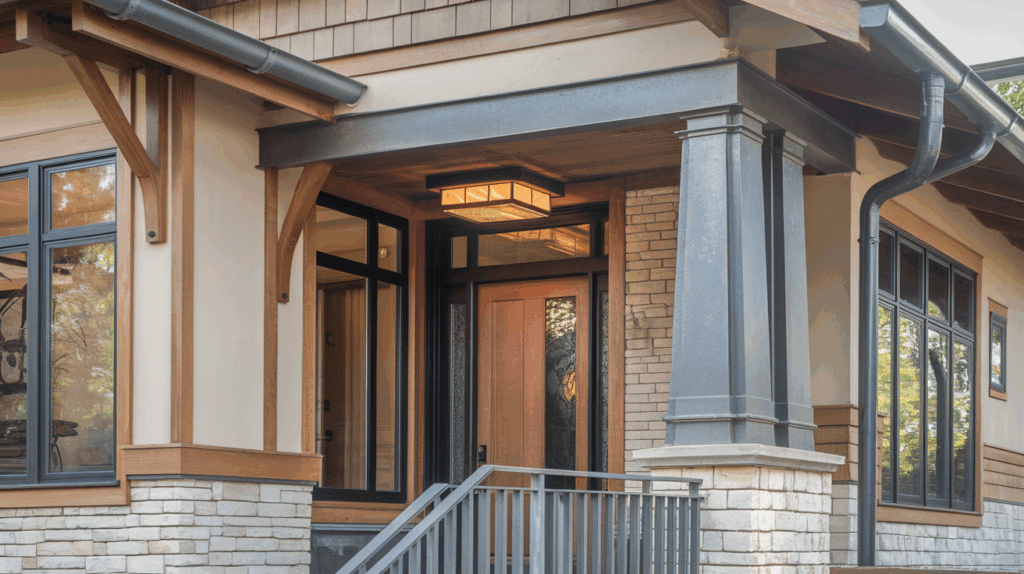
Combining wood trim with other materials like metal or glass can give your home a fresh twist on Craftsman style, adding more texture and modern appeal.
It’s a great way to update the traditional look while maintaining the timeless charm of Craftsman design.
What Is Craftsman-Style Window Trim?

Craftsman-style window trim is all about celebrating simplicity and craftsmanship.
It’s a design style that grew in popularity during the early 1900s, and it’s easy to see why it’s still a favorite today.
At its core, this trim style is about clean lines, natural materials, and a focus on functionality, making it feel timeless and cozy.
How to Incorporate Craftsman Window Trim into Your Home?
Here are some tips to help you choose the right wood and finishes, along with ideas on where to use this classic style.
1. Select the Right Wood
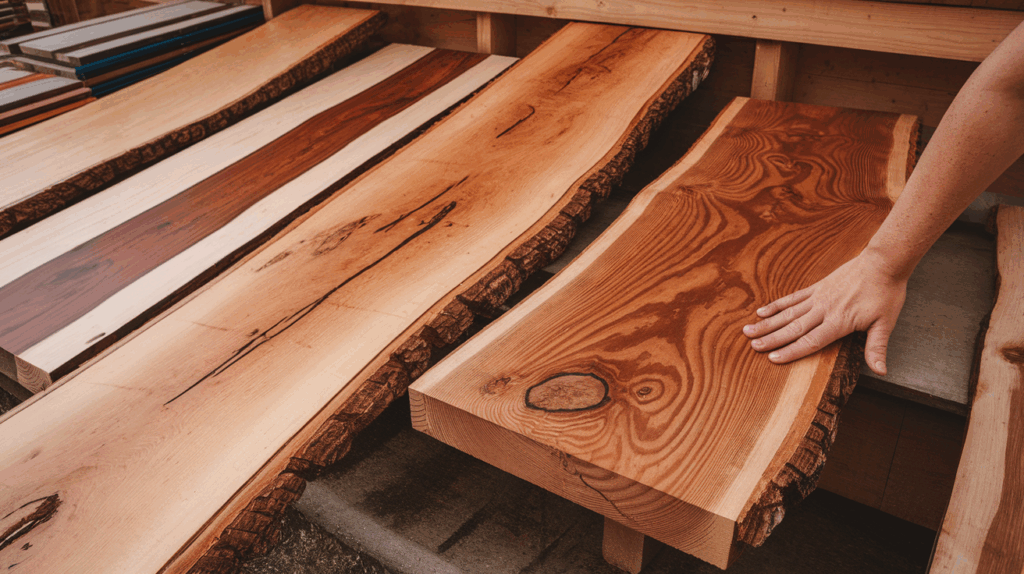
The key to achieving an authentic Craftsman look is using natural woods that have a rich grain. Popular choices include oak, maple, and cherry.
These woods have a beautiful, warm tone that enhances the natural aesthetic of the room.
Oak, in particular, is a favorite because of its strength and distinctive grain pattern, which gives the trim a handcrafted feel.
2. Go for a Natural or Stained Finish
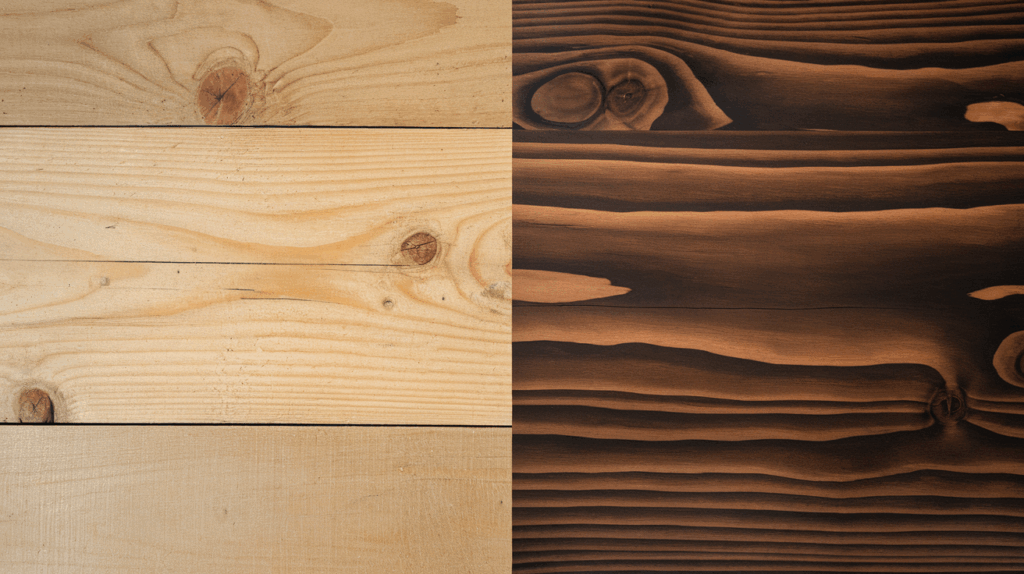
While some people choose to paint their trim, Craftsman-style trim often shines brightest when left in its natural state or stained.
Light stains work well in more modern spaces, while darker stains can add a cozy, rustic touch.
If you prefer painted trim, opt for earthy, muted tones like soft gray or warm beige that align with the Craftsman ethos.
3. Consider a Matte or Satin Finish

To keep the trim looking authentic, choose a matte or satin finish over high-gloss options.
This gives the wood a more natural, hand-crafted feel and complements the simplicity of the design.
Tips for Adding Craftsman Trim to Your Home
- Focus on Natural Materials: Use natural woods like oak, maple, or cherry for trim. Opt for wood stains to highlight the wood’s natural grain. For painted trim, choose soft, earthy tones like muted greens, warm grays, or off-white.
- Keep it Simple and Functional: Stick to clean, straightforward lines like square or rectangular profiles. Avoid overly decorative or complex designs. Focus on trim that is both practical and stylish.
- Layering Trim for Depth: Use contrasting wood tones or finishes for baseboards and window trim. Consider adding crown molding for extra dimension. Layering trim subtly can create depth without making the space feel cluttered.
Conclusion
Craftsman trim has stood the test of time because it’s simple, beautiful, and full of character.
Its clean lines and natural materials can easily transform any space, in case you’re adding it around doorways, windows, or even along a staircase.
The beauty of Craftsman trim is how it can blend perfectly with both traditional and modern styles, making it a versatile choice for any room.
As you think about these trim ideas, consider which ones speak to your personal style while staying true to the history and craftsmanship of the Craftsman design.
Don’t be afraid to make it your own!
If you’re planning a home project, Craftsman-style trim is a great way to add lasting appeal, warmth, and a touch of craftsmanship to your space.
It’s a simple yet effective way to create a home that feels welcoming and full of personality.

